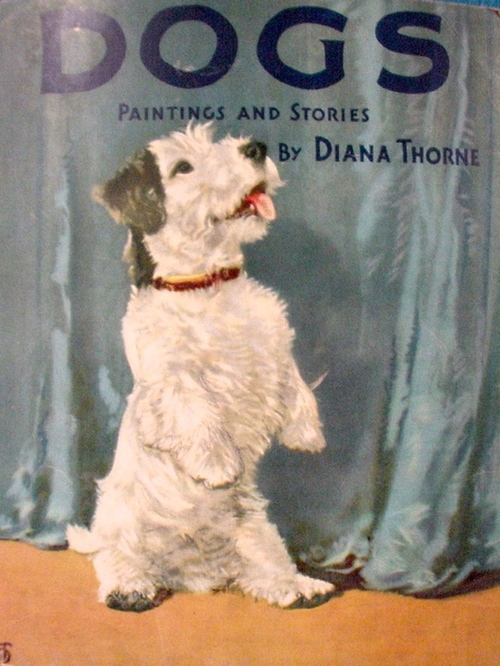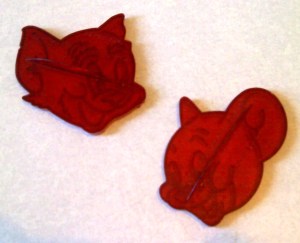When I was a kid, I had a number of vintage spaghetti figurines — mostly poodles. Sadly, I sold most of them at family rummage sales as I got older. So when I spotted this black poodle with the familiar ceramic spaghetti fur for just $2 at a local thrift shop I had to take him home. Even if he is not perfect.

The most obvious problem was a long stripe down his back where someone had likely priced him for sale with masking tape. (Lack of concern for damages to items when pricing them is a huge pet peeve for all collectors.) And his ceramic spaghetti fur was covered in dust and dry ick. In short, Blackie the vintage poodle figure was begging for a bath.

Before I share my tips on cleaning old figurines, please note: Do not wash or submerge any pieces which have been glued or repaired as the water will likely seep in and, if not dissolve the fixative, can crumble away the weakened pottery itself. Do not wash or submerge vintage chalkware pieces or any pieces which do not appear to have been fired.
The best way to remove sticker residue and other goo from pottery, ceramics and even (many) plastics is with liquid soap. Rather any liquid soap, from dish washing detergent to hand soap or even shampoo will do. But you should always do a small test of both the cleaning product and the tools you are using, preferably in a place which won’t show, such as the bottom of the piece.
First I like to rinse the piece. Just to get all the loose stuff off. Then take a finger tip full of liquid soap and apply it directly to the areas affected by the sticky residue.

Rub it in good and then let it sit a few seconds to soften the residue.
When you are ready, hold the figuring securely with one hand. Take care how you hold your piece. You will be tempted to set or lean the piece against the counter top or table; don’t. The pressure you’re applying can leverage a break or stress fracture, or simply risks bumping and sliding across the hard surface causing a chip. (Since I was taking photos while I did this, you’ll see I’m short a hand for holding in the photo; but trust me, I did it!)
Using your thumbnail, gently but firmly, scrape the residue off. (Personally, I find there is no greater tool than your own fingernails; you know exactly how much pressure you are applying and the ease with which the goo is sliding off.)

In cases like this vintage figurine, the sticker residue has aged and set so well that while you do make progress, not all of it will come off right away.

Simply apply more liquid soap with your finger tip, let it sit, and scrape again. You may wish to rinse or wipe the piece with a damp sponge to make sure you’re removing all of the loose bits of residue you’re scraping off.

This may take repeated efforts, but eventually the oils &/or emollients will break down the residue.

Now to clean between the ceramic spaghetti strands. This is best done with a toothbrush (I always keep toothbrushes in my cleaning kits). Wet the toothbrush, apply a bit of the same liquid soap, and gently brush it into the ceramic fur and other crevices of the figurine, creating a lather.

Be especially careful where there are damages, paint that you have not tested, etc. But overall, a light brushing with the mild soap won’t do anything but remove the dirt.

The rinse off and gently blot the piece dry. Let it sit on a towel to try before placing it back on the shelf, especially if it sits on a wooden or painted surface.

Now Blackie’s clean. But he’s still not perfect. He’s got a number of places where the tips of the spaghetti strands have been broken; the white ceramic spots are obvious to the collector’s trained eye, even if he looks great on the shelf. So I’m leaving him alone. But if your spaghetti figurine is going to remain yours, there’s nothing wrong with taking a permanent marker and placing a dot of color on the bare white ceramic and hiding the flaws.













































